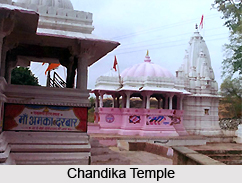 Bageshwar is a town and a municipal board in Bageshwar district in the state of Uttarakhand, India. It is also the district headquarters of Bageshwar district. There are many places of tourist attraction and historical importance in the town of Bageshwar as it nestles many historical and ancient temples dating back to the 10th century. Bageshwar is the holy centre of pilgrimage and abode of Gods. It is a spiritual spot of Lords and inhabitants of Bageshwar are great devotees of Lord Shiva. Bageshwar is located about 90kms from Almora and this is the sacred place of the convergence of the two holy rivers Saryu and Gomti. Bageshwar is an important place for trekking enthusiasts. This is the only place from where one can reach the Pindari, Kafni and Sunderdhunga glaciers.
Bageshwar is a town and a municipal board in Bageshwar district in the state of Uttarakhand, India. It is also the district headquarters of Bageshwar district. There are many places of tourist attraction and historical importance in the town of Bageshwar as it nestles many historical and ancient temples dating back to the 10th century. Bageshwar is the holy centre of pilgrimage and abode of Gods. It is a spiritual spot of Lords and inhabitants of Bageshwar are great devotees of Lord Shiva. Bageshwar is located about 90kms from Almora and this is the sacred place of the convergence of the two holy rivers Saryu and Gomti. Bageshwar is an important place for trekking enthusiasts. This is the only place from where one can reach the Pindari, Kafni and Sunderdhunga glaciers.
History of Bageshwar
Bageshwar has an imposing history, which can be traced back to several centuries. Bageshwar is said to derive its name from the ancient temple of Lord Shiva set in the heart of the town. According to popular mythological legends, sage Markandey stayed here and this place was visited by Lord Shiva in the form of Bagh or tiger and thenceforth this place has become an important place of pilgrimage for Shiva worshippers.
Geographical Location of Bageshwar
Bageshwar district is located in the northern parts of Uttarakhand, India. In the East lies the district of Pithorgarh bordering Tibet, in the West lies the district of Chamoli, North, the Great Himalayas, and to the South lies the district Bageshwar.
Places of interest in and around Bageshwar
Steeped in religious aura this picturesque town is braided with religious tales and awesome surroundings. Primarily reckoned as the prominent Shaivaite delight, Bageshwar has its share of quaint interludes of amazing places.
Baijnath
Baijnath is a small and delicate town situated on the banks of River Gomti. This beautiful spot lies in a flat valley called the Garur valley of Katyur and is surrounded by verdant rich green hills and beautiful terraced fields. Baijnath is located at a distance of 19kms from Kausani and 26 kms from Bageshwar. Baijnath was once a capital of the Katyuri Dynasty, during their reign it came to be known as Kartikeyapura. Baijanth is 81kms from the famous township Almora. In Kumaon region, Baijnath is amongst the famous place for its remote antiquity and historic importance.
Bagnath Temple
At the convergence of the two Rivers Gomti and Saryu, there is a massive temple with conical tower. This is the shrine of the `Bageswar` or the `Vyagreswar` that is the `Tiger Lord`, an epithet of Lord Shiva. This temple was built by the Kumaon King Laxmi Chand around 1450 A.D. Devotees flock in this shrine on the annual occasion of `Shivratri.`
 Chandika Temple
Chandika Temple
This temple is located about 1.5km from Bageshwar and is dedicated to the Hindu Goddess Chandika. This temple is perched atop a mountain and every year on the divine occasion of Navratras, devotees congregate here to offer prayers and puja to the Hindu Goddess.
Kanda
Kanda is an enchanting spot for nature lovers. It is located 24kms from Bageshwar on Bageshwar-Chaukori motor road. Nearby this spot is located the ancient temple of Bhadrakali which enhances the beauty and magnificence of Kanda. This area is rich in chalkmitti.
Sri Haru Temple
Sri Haru Temple is situated at a distance of about 5kms from Bageshwar. Devotees have faith that wishes are fulfilled by God and the prayers never go in vain. Every year, a major festival is held at large on the auspicious occasion of Vijaya Dashmi day following the Navratras.
Gauri Udiyar
This sacred site is situated at a distance of 8kms from Bageshwar. Here there is a colossal cave measuring 20x 95sq mts, which enshrines idols of Lord Shiva.
Vijaypur
Vijaypur is perched at an altitude of 1820metres and is situated at a distance of 6km from Kanda and 30kms from Bageshwar. This is an exciting spot which offers panoramic and picturesque views of the snow capped Himalayas.
Accessibility
By Air
The nearest airport is Pant Nagar which is 206 kms far.
By Rail
The nearest railway station is Kathgodam situated at a distance of 180kms.
By Road
Bageshwar is well linked to all the major towns of the state. Local transport like jeeps, buses, taxis are available in plenty.



















